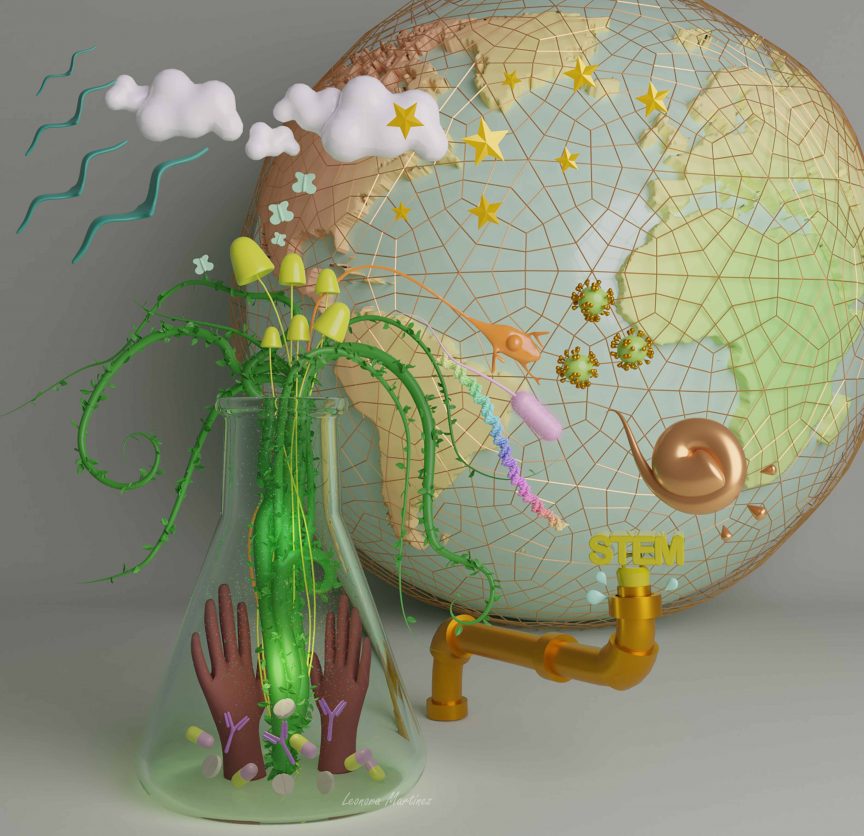Name: Leonora Martínez Núñez
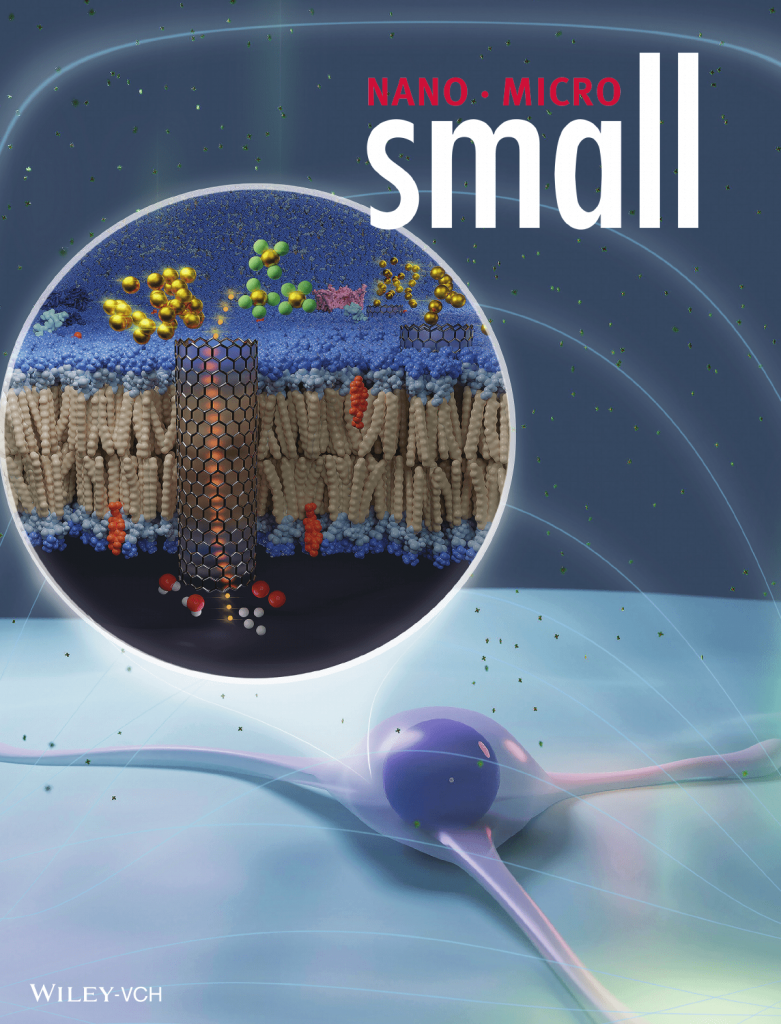
Which came first in your life, the science, or the art?
It has been a fluctuating thing I believe. As a kid I was more interested in performing somehow and doing crafts all the time, however, I always wanted to be a scientist. In high school, I took both biological sciences courses and arts and graphic design, but for my formal education, I decided to study Biology. I wanted to pursue an academic life and I dreamt about having a PhD, being in a lab doing some cutting-edge science, yet secretly, I also wanted to get a degree in arts and design.

At the time, I did not know there was a way to combine science and art and make a career out of it. I never heard of something like that back home or anywhere in the school. I’ve always been very creative, but honestly, I’m not good at drawing or painting realistically. I have more of an abstract style.
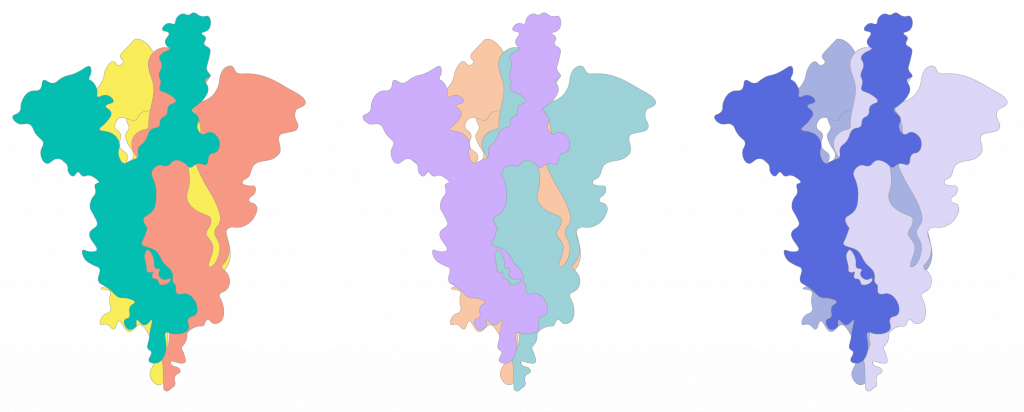
During my PhD, I got into Illustrator and Photoshop, and I made a few simple illustrations for my dissertation. I thought the idea of making scientific drawings for a living was cool, and kind of fulfilling, but I did not know that it could be an alternative career, so I kept pursuing my life as a scientist.
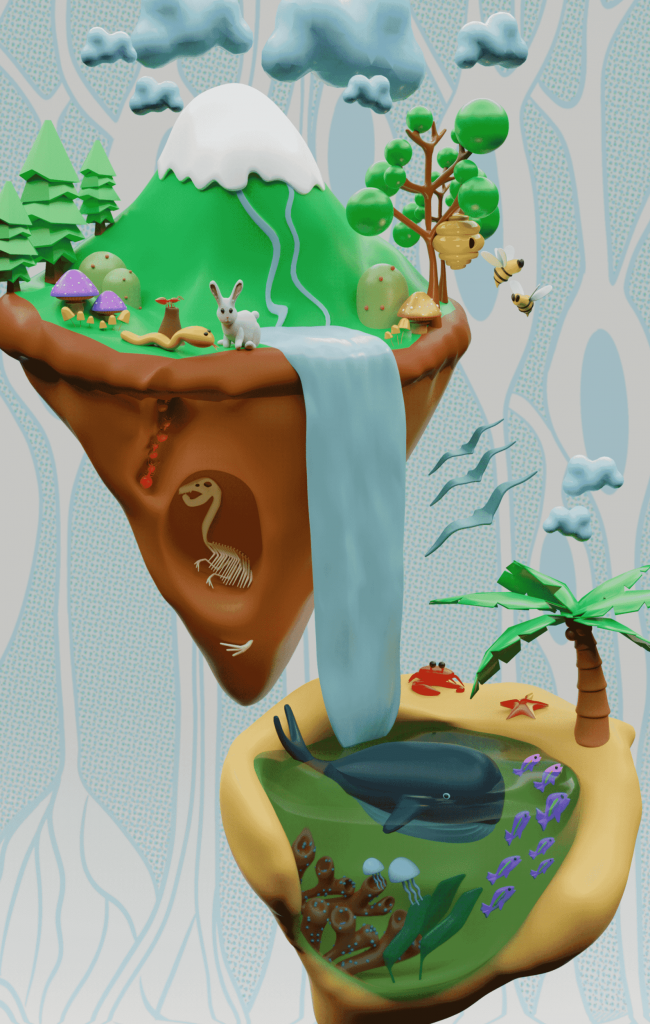
Currently, I’m a postdoctoral researcher. I study membrane trafficking in yeast. During lockdown in 2020, I decided to start learning 3D modelling and kept improving my skills in digital illustration. The pandemic got me thinking about what I wanted to do with my life. I love science, and all the scientific knowledge I have acquired over the years, but I decided I don’t want to pursue academic life anymore. Instead, 2 years ago I started calling myself a scientific illustrator and started believing it, even though I don’t have a formal degree as one. I’m still working in a lab, but looking forward to being a scientific illustrator full-time soon.
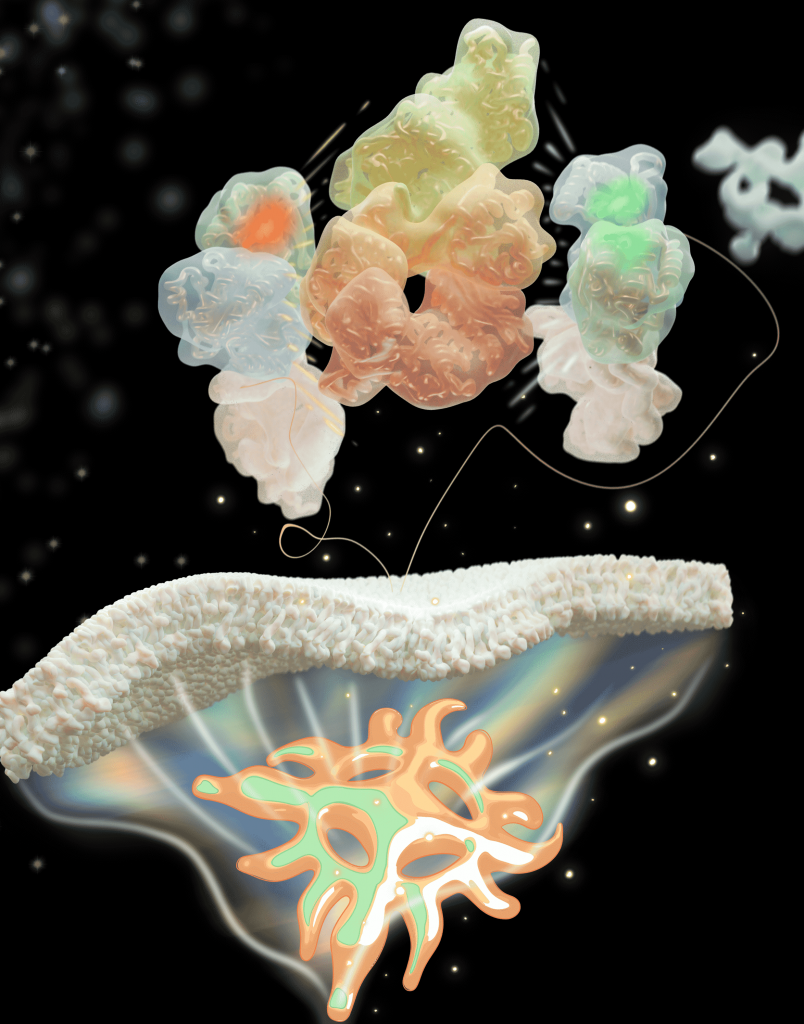
Which sciences relate to your art practice?
It started mainly with fungal cell biology, microbiology, molecular biology and biochemistry because those are the areas of science I was focused on during my doctorate. Now in my postdoc, I started doing a lot of protein visualization from cryo-electron microscopy data and protein crystallographic data. I have dabbled in neuroscience and nanoscience too. But mycology, fungi, and protein visualization are the main ones.

Fortunately, because of my background, I understand general concepts of diverse areas of science, and although for some topics I might need to do more research than others, I feel I have a good base to help researchers with their scientific illustration needs. I have participated in some projects related to academic life, some about ecology and environmental communications.

What materials do you use to create your artworks?
Just a pen and paper to start sketching ideas and from there just my computer. A good graphics card, a powerful processor, and a ton of memory is key. I use an iPad where I often do some post-production and use [it] for sketching. I use this program called Blender, which is free and there are so many resources out there to learn how to use it. It is really powerful. Some people are making movies with it, which blows my mind.

Artwork/Exhibition you are most proud of:
I have very few published works, and I’ve never had an exhibition with my images, not yet. However, I’m proud of my FUNGIble tokens piece. I made it thinking that I wanted to reach out to a younger audience, and maybe get them interested in fungal biology. Days after winning the poster award at the VIZBI 2022 conference, someone told me they showed it to their 10-year-old, and they were really into it, and that was one of the reasons they wanted to commission some artwork.
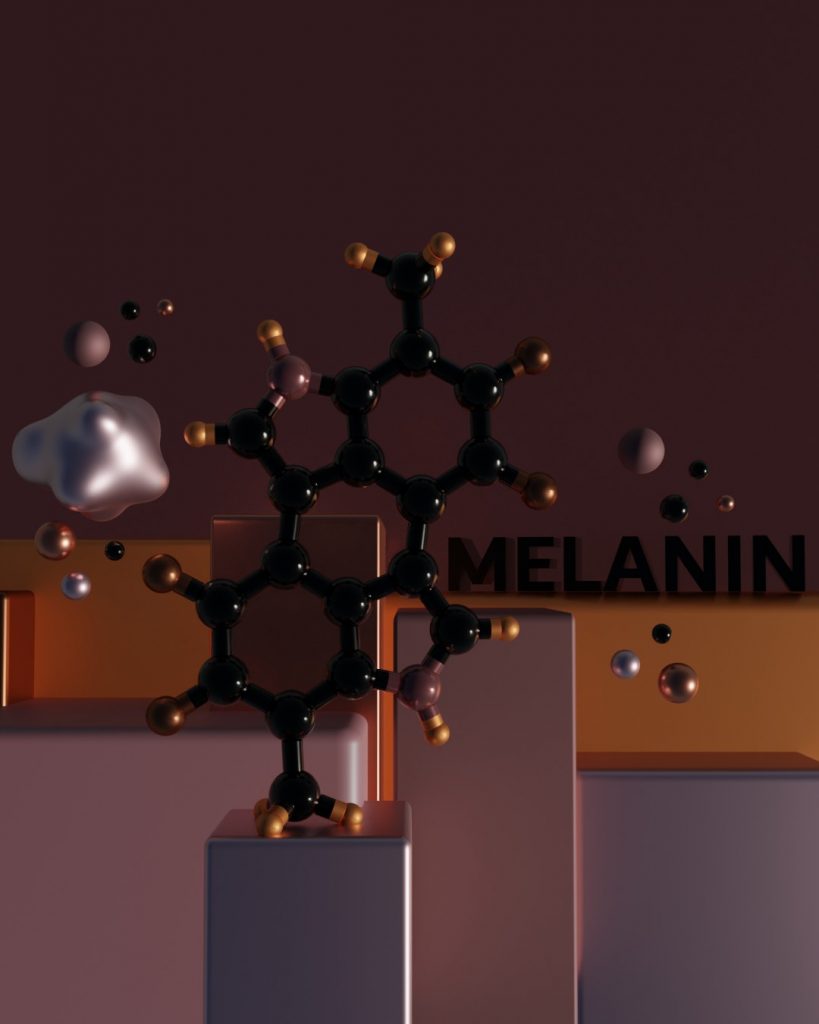
Which scientists and/or artists inspire and/or have influenced you?
My favourite scientific illustrator of all time is Ernst Haeckel, his work of “Art Forms in Nature” definitely inspired me back in the early days when I was studying Biology. I could stare at those illustrations for hours trying to figure out what was real and what was his imagination. More recently, there is a lot of inspiring people out there, especially with social media, you have access to amazing creators and their artwork, not only SciArt but the illustration in general.
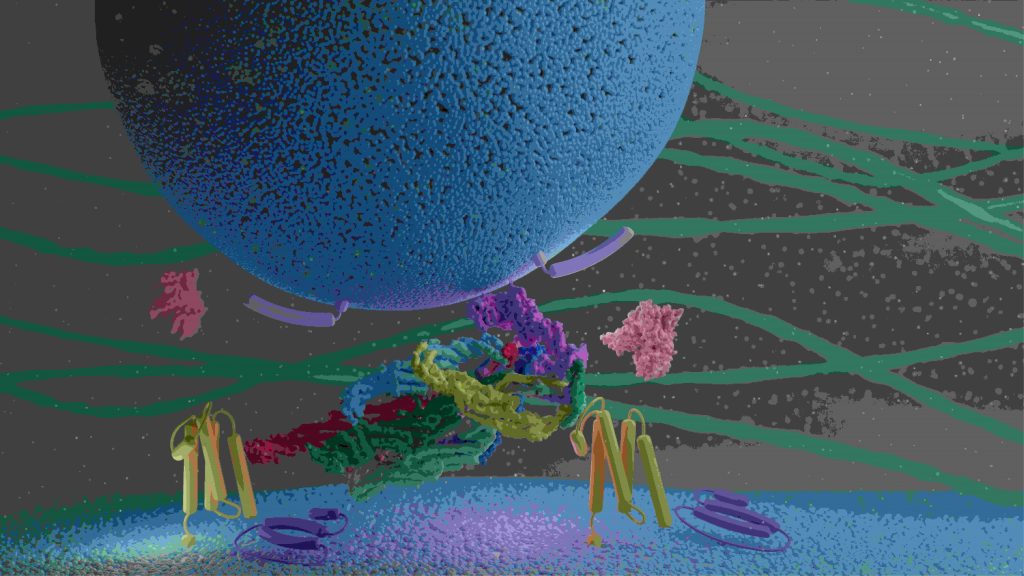
At the top of my head is Verena Resch (@luminous_lab), a scientific illustrator, from who I have learned a lot; I hope I can achieve that level of “eye for design” one day. I’m a big fan of Olena Shmahalo (@NatureInTheory), their work is a combination of physics or math with magic and wizardly elements, so beautiful.
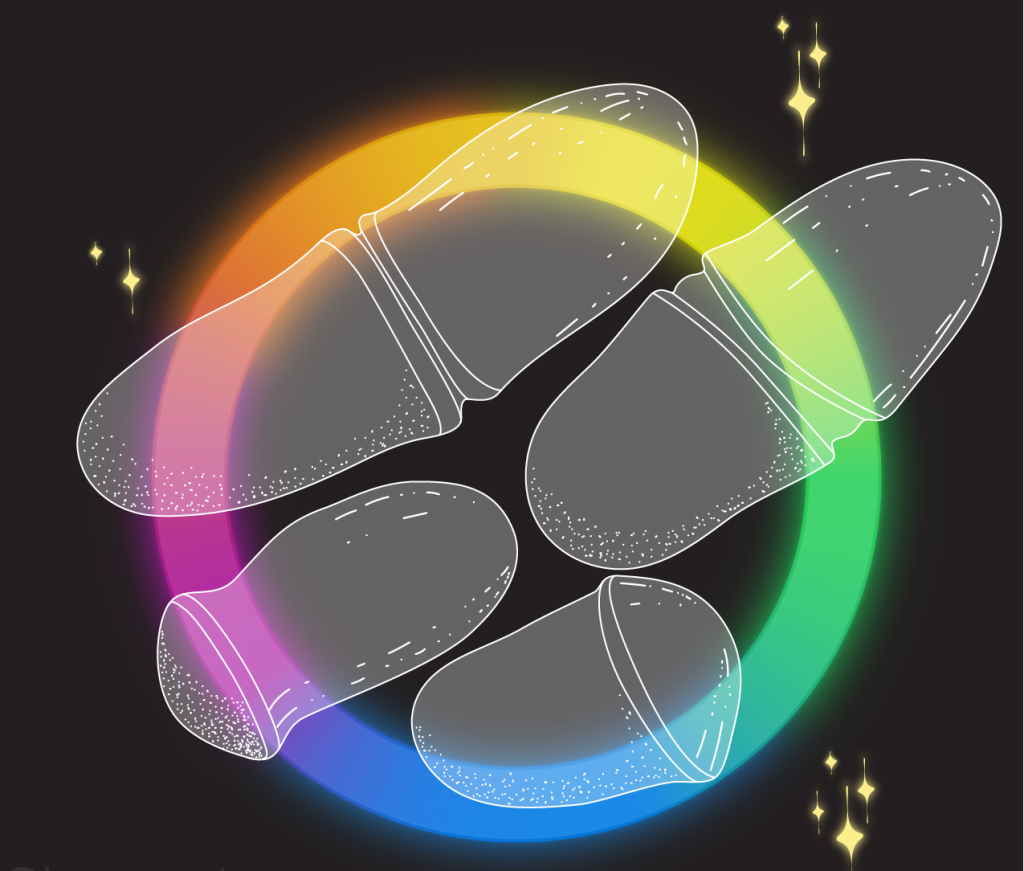
Another amazing illustrator is Matteo Farinella (@matteofarinella). He gave a little seminar where I work, and he looked at my portfolio at that time and told me I could do this. I follow his work closely since he has been very encouraging. And more generally, the artist I admire the most is Remedios Varo, a Spanish surrealist artist based in Mexico, [who] used her art to fight the patriarchy and the gender roles established after WWII.

SciArt is an emerging term related to combining art and science. How would you define it?
I think the practice of combining science and art is as old as it could be. I believe it provides the opportunity to merge different types of knowledge and, more importantly, to share it. For science, this creates a portal to reach out to more people outside the scientific or academic communities.
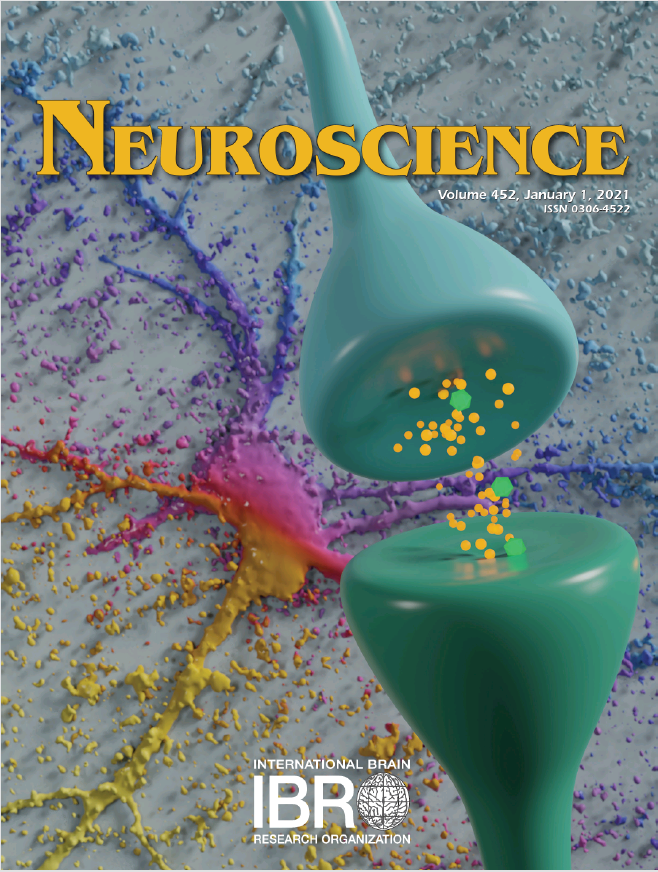
I also think the presence of SciArt in our lives proves that our brain is not this divided thing that prefers logic over aesthetics or vice versa, and there are no rules when it comes to making art. Science has plenty of inspiration and content to make art [with]. We might as well use it and help spread scientific knowledge.
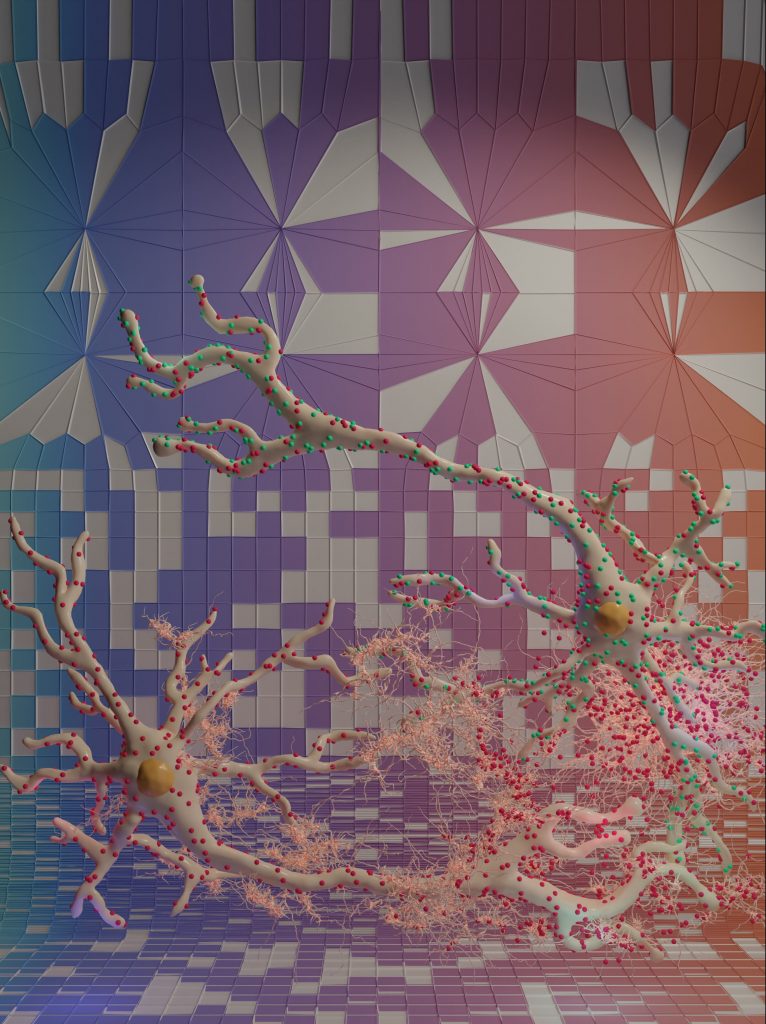
For more by Leonora Martínez Núñez, visit her website and Twitter.
*
Featured image: Science is political (2021) by Leonora Martínez Núñez
All images courtesy of the artist.
Share this Post

